Out of all the different Bernedoodle colors and patterns, which one should you choose? In this guide, we’ll take a look at some of the most gorgeous Bernedoodle colors and explain a little bit more about their background. The most popular ones, the rarest colors, and everything that fits in between. In addition to that, we’ll also discuss whether the color of your Bernedoodle puppy can impact their behavior, health, or temperament in any way. Let’s get started!
Table of Contents
- Bernedoodle Colors & Patterns
- Bernedoodle Color: Their Heritage
- Bernedoodle Colors and Coat Patterns
- Do Bernedoodle Puppies Change Color?
- Does Coat Color Affect a Bernedoodle’s Health And Behavior?
- Bernedoodle Colors: Which One Should You Get?
- Bernedoodle Colors & Patterns: FAQ
Bernedoodle Colors & Patterns
With their beautiful, fluffy coats, Bernedoodles can flaunt a wide array of different Bernedoodle colors and patterns. There are the traditional tri-colored Bernedoodles that inherit their coat colors from the purebred Bernese Mountain Dog, but also gorgeous patterns like merle, parti, sable, or phantom that come from the Poodle’s side of their lineage. And then there are some solid Bernedoodle colors like jet black, chocolate, or white that you simply won’t be able to stop swooning over.
But as there are so many different Bernedoodle colors to choose from, it can be difficult to make your decision. So, which one should you get? Below you’ll find a list of the various Bernedoodle colors and patterns with lots of pictures, so you’ll know what to expect when adopting the Bernese-Poodle mix.
This page is sponsored by our
Featured Bernedoodle Breeders
Fleming, CO
Russell, MA
Roseville, CA
Tipton, IN
Bernedoodle Color: Their Heritage
If we’d like to understand all the different Bernedoodle colors and color combinations, it’s important we learn a bit more about their heritage. As we combine two different purebred dogs, there are so many possible variations and outcomes! Of course, a Bernedoodle puppy will inherit its traits and characteristics from its lineage. So, let’s first discover what colors are common in the Bernese Mountain Dog’s side of the family, and what are the most common colors in Poodles.
Bernese Mountain Dog Colors
The Bernese Mountain Dog usually comes in its signature tri-colored coat. The traditional Bernese Mountain Dog coat features a solid jet black base color with white and rust or tan markings. The tan and rust markings are usually present above the eyes, on the cheeks, on each side of the chest, on the legs, and under the tail. The white markings are found on the muzzle, between the eyes, on the chest, neck, and paws.
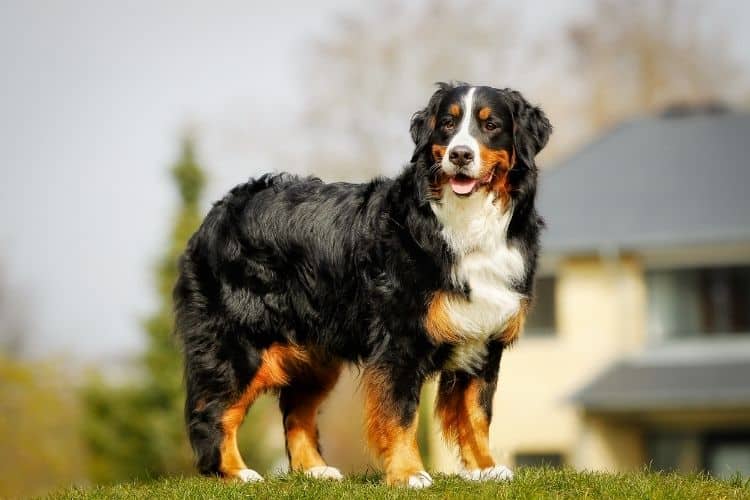
Poodle Colors
Poodles, on the other hand, most commonly come in a variety of solid colors, such as black, blue, gray, silver, brown, red, apricot, cream, cafe au lait, silver beige, and white. In addition to that, Poodles can also come with different color combinations like black and brown, black and tan, black and apricot, black and cream, brown and apricot, brown and white, and other combinations of the more common solid colors.
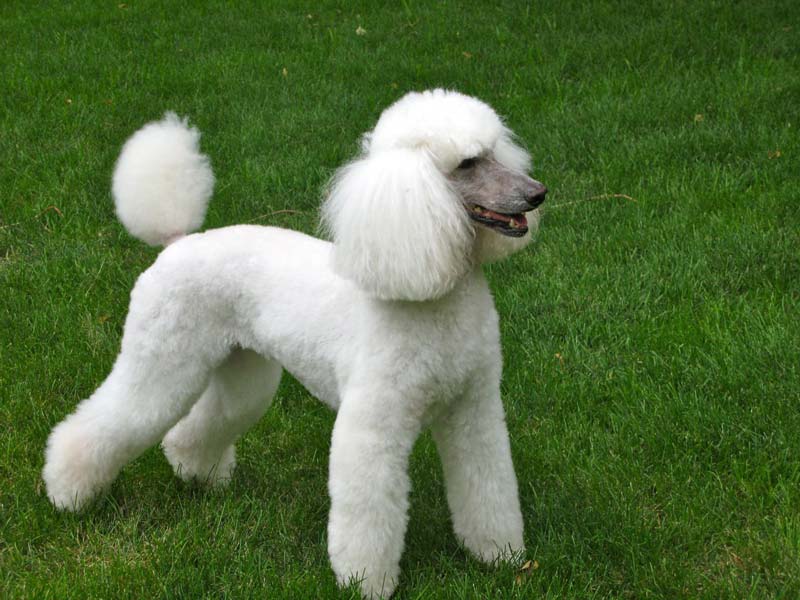
Bernedoodle Colors and Coat Patterns
Now that we’ve learned where all the Bernedoodle colors come from in terms of their heritage, let’s discover the various Bernedoodle color combinations and variations available.
Black and White Bernedoodle
The black and white Bernedoodle is one of the more popular Bernedoodle color variations. As you might guess, black and white Bernedoodles have a black solid dominant color and white markings on the face, neck, and chest. Sometimes they’ll also have white markings on the paws and feet.
Merle Bernedoodle
One of the rarest, but most beautiful Bernedoodle colors is the merle pattern. Merle Bernedoodles have a solid base color with speckled patches of diluted colors throughout the coat. The merle coat gene is not as common in either Poodles or Bernese Mountain Dogs, but it can be passed onto the Bernedoodles when one of the parents is carrying the merle gene. A higher chance of achieving a merle Bernedoodle pup is by crossing a Poodle with a merle Bernedoodle. However, ethical breeders will never cross two merle Bernedoodles, as this increases the risk of serious health issues like blindness and deafness.
Red and White Bernedoodle
Red and white Bernedoodle is another rare color combination that features a mixture of reds and whites. The more traditional red and white Bernedoodle color has a solid red base on most of the body, while the chest, face, paws, and legs have white hair. Additionally, there are parti red and white Bernedoodles, where the base color is white throughout the body. In contrast, the red markings are found on the face, ears, and sometimes on the back as well.
Black Bernedoodle
A solid black Bernedoodle is more of a rare find compared to the black and white Bernedoodle and tri-color Bernedoodles. Solid black coat originates from a recessive gene, so it’s much more difficult to achieve the solid black Bernedoodle coat color. If the goal is to achieve a black Bernedoodle, both parent pups should carry the same recessive gene.
Tri-Color Bernedoodle
The tri-color Bernedoodle is one of the more traditional Bernedoodle colors inspired by the Bernese Mountain Dog parent. The Bernedoodle tri-color pattern features three different colors on the coat. There can be various tri-color patterns with colors like black, brown, tan, rust, apricot, red, white, and cream. The dominant base color is usually darker and white markings are found on the face, chest, feet, and paws.
Sable Bernedoodle
Another popular choice is the sable Bernedoodle color. Sable Bernedoodles have a solid base color, but the hairs have black tips. Of course, the overall look depends on how much of the hair lengths are colored black from the ends. What’s more, Sable Bernedoodles have the highest chance of clearing, which means that their color starts to fade much lighter as they reach adulthood. Their ears will typically stay darker, but they’ll ‘grow out’ their black-tipped hairs.
Phantom Bernedoodle
Phantom Bernedoodles are somewhat similar to tri-colored Bernedoodles, but they have less white markings and more brown hues in their coats. The most common phantom combination is black and tan. These pups usually have dominant black color all across the body with tan markings on the face, chest, legs, and paws. This is again a more rare Bernedoodle color out there, but it sure does look beautiful!
Chocolate Bernedoodle
Chocolate Bernedoodles can come in a variety of patterns. There’s the solid chocolate Bernedoodle with rich brown undertones and then there are plenty of chocolate variations like phantom, tri-color, sable, and parti. Since the Bernese Mountain Dog doesn’t carry the chocolate gene, this color is most commonly achieved in F1b and later generations, where both parent dogs have chocolate in their coat.
White Bernedoodle
In extremely rare cases, a Bernedoodle may also come with an all-white coat. White Bernedoodles are more common in backcross generations where the majority of their genetic makeup comes from the Poodle, such as F1b, F1bb, and F2b generations. That’s because the purebred Bernese Mountain Dog sports the black tri-color pattern, whereas the Poodle can also come in a solid white coat. If you’re keen on getting an all-white Bernedoodle, you might have to work a bit harder to find one! But if you’re okay with other spots and markings on your Bernedoodle’s coat, you may be able to find combinations like white and tan or white and cream much easier.
Rare Bernedoodle Colors
Of course, in addition to all of the Bernedoodle colors and color combinations we listed above, there are countless other colors and patterns that the puppies can come in. Many of them surprising even the breeders. It all comes down to their genetics and which dominant and recessive genes are present. Additionally, keep in mind that not all puppies in the same litter inherit the same coat colors. As with any Doodle, combining two different breeds gives us endless possibilities.
Mini Bernedoodle Colors
When it comes to Mini Bernedoodle colors, they can sport the very same tri-color coats as well as solid black, chocolate, or white coats. Patterns like merle, phantom, and sable are also possible for these tiny Doods. One thing, however, is that if a Mini Bernedoodle is a backcross variety, they’ll likely lean more on the Poodle’s side of the lineage. So, if you’re looking for a tri-colored Mini Bernedoodle, you’ll have a higher chance when adopting an F1 Mini Bernedoodle. We also recommend you discuss this topic with your chosen breeder, as they may test their Doods for coat genetics.
Do Bernedoodle Puppies Change Color?
Like many other Doodles, Bernedoodles often carry the fading gene, which is usually inherited from the Poodle side of their lineage. If a Bernedoodle puppy has inherited the fading gene, you’ll notice their color fading once they start nearing adulthood. This typically occurs anywhere from 6 to 10 months of age.
The fading, also called clearing, is most noticeable in darker colored Bernedoodles who have blacks and browns in their coat. Black Bernedoodles with the fading gene often change into silver, gray, or bluish tones. Chocolate or brown Bernedoodles can turn silver, cream, or silver beige over time.
Does Coat Color Affect a Bernedoodle’s Health And Behavior?
In terms of their health and temperament, there’s no difference between black and white Bernedoodles or tri-color Bernedoodles. There’s no link between a Bernedoodle’s color affecting their behavior or overall health.
However, merle Bernedoodles might be at a slightly higher risk of certain health problems, such as deafness or blindness. That’s why it’s especially important not to breed together two merle Bernedoodles. Fortunately, ethical breeders take health and genetic testing seriously, so this shouldn’t be your biggest concern.
Bernedoodle Colors: Which One Should You Get?
If you’ve come to the conclusion that the Bernedoodle is the breed you should adopt, choosing the color of the puppy is likely a difficult decision. To be fair, it all comes down to your preferences and which colors you like. However, we do recommend you choose your new family member based on their health and temperament, not for their looks only. After all, you’ll be spending at least 10 years with this adorable little Dood. For this reason, you’ll want to make sure that the puppy you adopted fits your lifestyle, your family dynamics, and comes from a healthy background from a reputable breeder.
Bernedoodle Colors & Patterns: FAQ
Bernedoodles often carry the fading gene that’s inherited from the Poodle’s side of the lineage. For this reason, it’s not uncommon for Bernedoodles to change color as they age. Black Bernedoodles can fade into gray or silver tones, and chocolate Bernedoodles might fade into silver, silver beige, and beige tones. If you’re after a specific color, ask your breeder about the previous litters and if the puppies carry the fading gene. The only way to accurately predict the color of your puppy is by DNA testing, which you can arrange at an additional cost with your breeder.
The tri-colored Bernedoodle seems to be the most sought after Bernedoodle color as it looks much like the purebred Bernese Mountain Dog, minus the heavily shedding coat. The mix of the black, rust, and white coloring paired with the shaggy Bernedoodle coat gives these Doods a distinctive look that many adore.
A parti Bernedoodle has at least 50% of its body covered in solid white with large patches of other solid colors on them. Those darker patches are usually either black, brown, cream, red, or tan. In addition to that, those darker patches may fade lighter over time, but the parti pattern will stay the same.
The rarest variations are bi-color black and white Bernedoodle, sable, phantom, and merle patterns, solid black, and solid white. What’s more, as the tri-color Bernedoodle is one of the most coveted variations, you might have to wait slightly longer to adopt this Bernese-looking pup.
In conclusion, choosing the color of your Bernedoodle puppy is one of the more difficult decisions that you face. They all look beautiful in their own way, but one thing is for sure – all Bernedoodles have amazing personalities, regardless of their coat color. We hope this guide has given you a good idea about all the different Bernedoodle colors and patterns that are available out there.
What is your favorite Bernedoodle color? Let us know in the comments below!
Want to Learn
DIY Doodle Grooming?
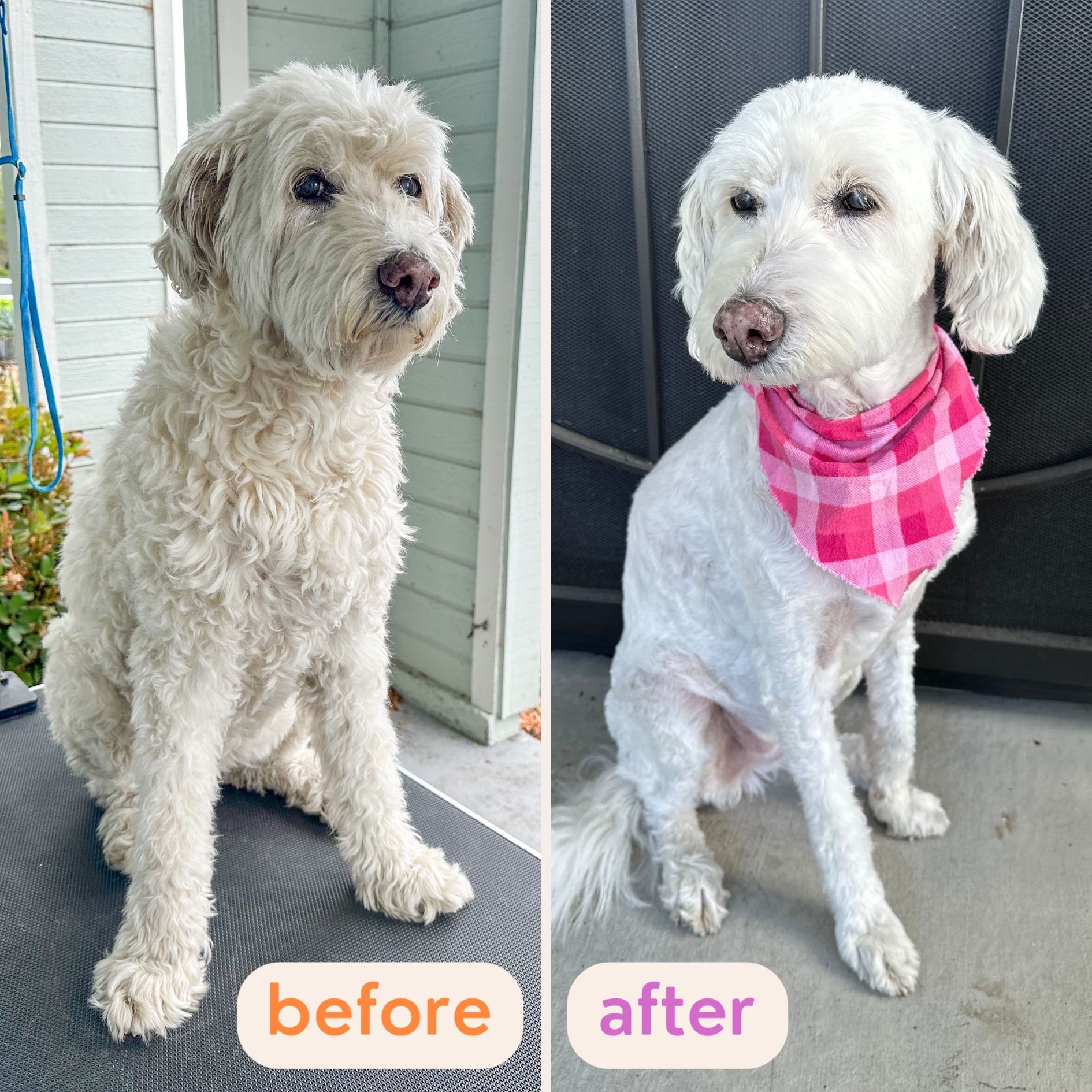
 “Every concern and question I had now has clear, practical solutions.” – Paula D.
“Every concern and question I had now has clear, practical solutions.” – Paula D.
 “These lessons have provided tremendous amounts of information.” – Steve B.
“These lessons have provided tremendous amounts of information.” – Steve B.
 “Buy the course and complain about how easy it is!” – Chris S.
“Buy the course and complain about how easy it is!” – Chris S.
Learn How To Groom Your Doodle At Home…
Safely…And Without Confusion:

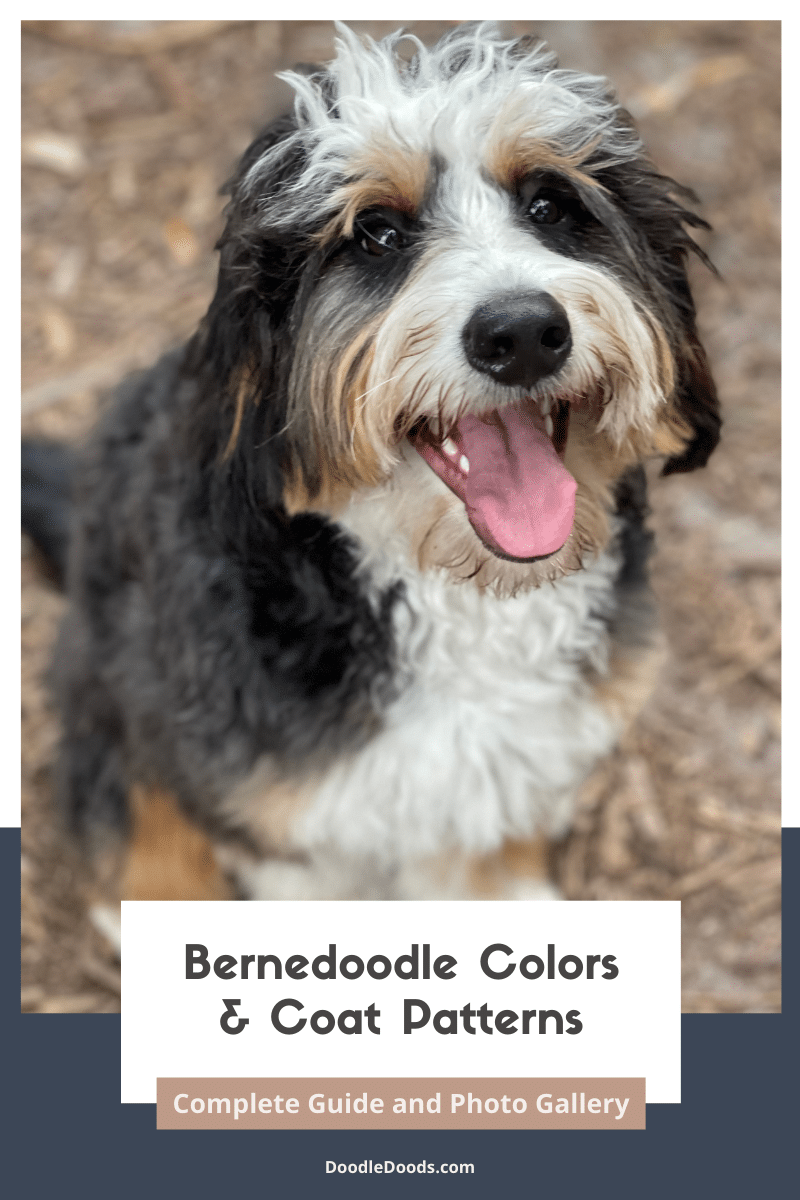
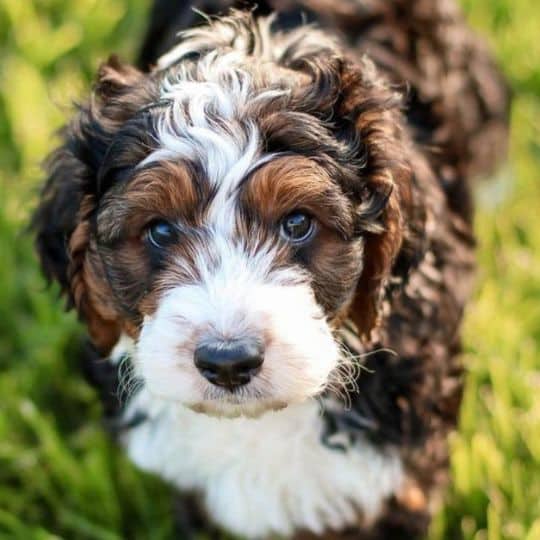
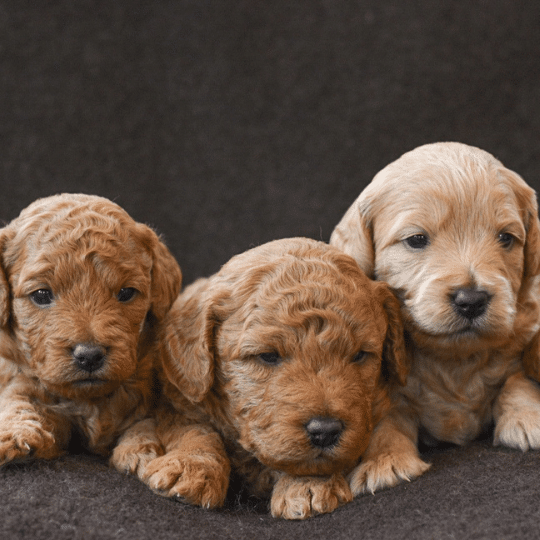
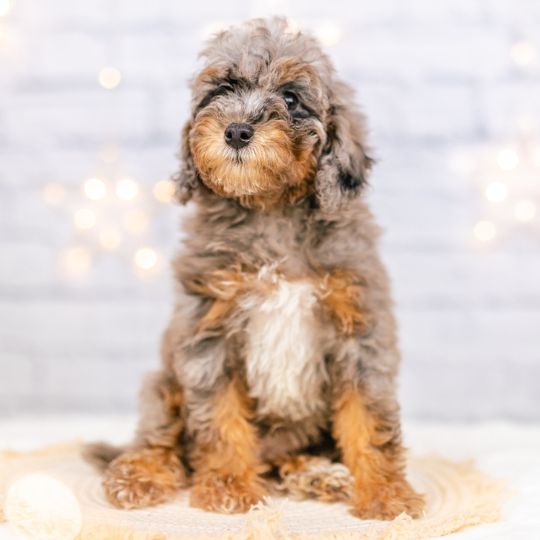
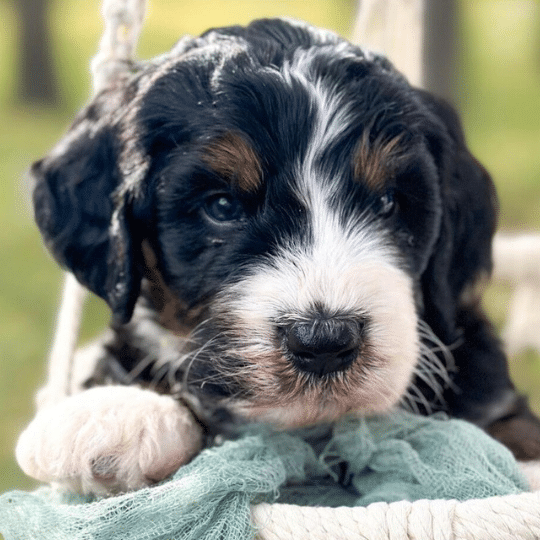

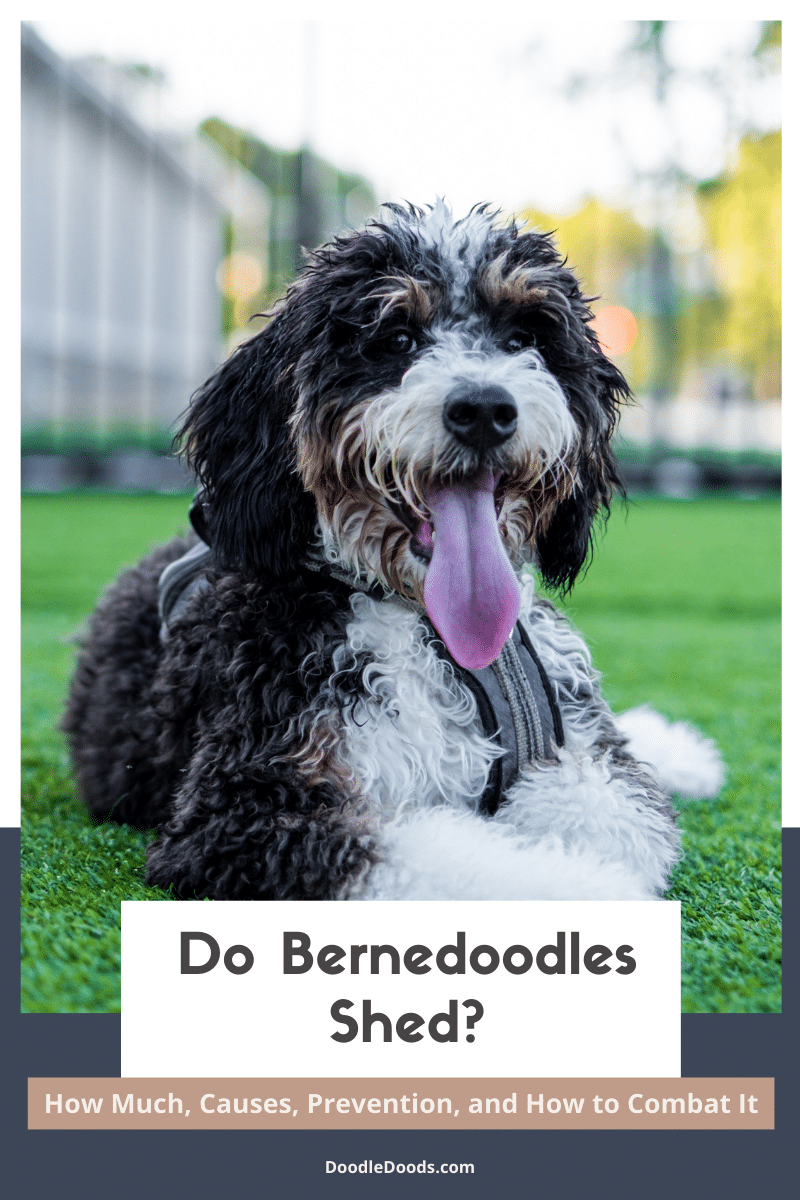
I have just got a f1 black and white female bernedoodle…
February 25, 2022 at 8:15 amand i White/red male phantom parti standard poodle…
I’m currently awaiting the dna results to come in…however I’m curious to the possibilities of the color combo’s i will achieve from breeding the 2 together? how do I find out how to narrow down percentages of coat colors from the offspring?
I’m afraid there’s no guarantee or way to predict coat colors, especially as both parents have such uncommon markings/coat patterns. The grandparents’ coat colors and patterns could also influence how the pups’ turn out. As you can imagine this pairing could have quite an unpredictable outcome.
March 4, 2022 at 12:58 pm